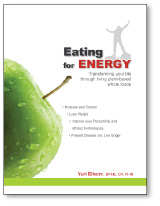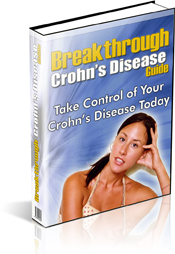In fact, Macronutrients should take up the largest portion of your diet. This category of nutrients includes carbohydrates, protein and fat. Your body uses
macronutrients for energy, growth and repair. Different types of macronutrients do different things for your body, so it is important to get variety in your daily diet, Be sure to eat the right types of each class of macronutrient.
CARBOHYDRATES come in two forms: Simple and complex.
Simple carbohydrates are sugars that don't need to be broken down further by the digestive system. The body uses them for quick boosts of energy. Honey, maple syrup, soda, cookies, candy, table sugar and cakes are all sources of simple sugars... Since they are also high in calories, they should only be eaten occasionally. Instead, it is important to eat healthy sources of simple sugars, like fruit and fat-free or low-fat milk. These alternatives to sugary sweets offer vitamins, minerals and fiber as well.
Complex carbohydrates are larger molecular structures and digest more slowly in the stomach and intestines. They provide longer-lasting energy. Foods like bread, pasta, rice, oatmeal, corn and starchy vegetables (like potatoes and carrots) contain the highest amounts of complex carbs. Sources you should choose most often are vegetables, beans and whole-grain, high-fiber breads and cereals.
The right carbohydrates to keep in your diet are the complex carbohydrate. They provide fiber along with trace elements, vitamins and phytonutrients, as well as energy.
Complex carbs generally have a low-glycemic index - which means they release their sugar content more slowly into the blood stream. This is why they provide a longer energy supply and it is easier for your body to regulate its sugar levels.
The glycemic index is a way of measuring the rate at which carbohydrates are broken down and appear in the blood as simple sugars. Those foods that result in a rapid rise in blood sugar often have a high glycemic index. Carbohydrates that are broken down slowly and cause only a moderate, controlled increase in blood sugar often have a low glycemic index. Some carbohydrates fall in between.
High-glycemic foods provides quick energy, but it is usually short-lived and hunger soon returns. This crash stimulates many energy responses in our body chemistry, stressing our organs. Most convenience foods and many meal replacements and diet products on the market to-day are high-glycemic.
Low-glycemic foods
PROTEIN - A healthy diet includes a variety of high-quality protein sources, including complete proteins, which contain all of the essential amino acids. Protein is what makes up bodily tissues, like the muscles, skin and organs. When you eat food containing protein, your digestive system breaks it down into smaller parts called amino acids. These amino acids are later used by the body to build and repair cells and tissues.
The two main sources of protein are: animal products, like meat, milk, fish and eggs and vegetable products, like beans,nuts,seeds and soy. To make sure you get all the essential amino acids, it's important to eat a wide variety of these protein-rich foods, such as lean meat, fish, fat-free and low-fat dairy products, eggs, nuts, seeds and beans.
FATS - Surprisingly, some fat is good for you! Your body needs it for proper brain development, like the fats omega-3 and omega-6, to bring certain vitamins through the brain barrier.
There are two types of fat: Saturated and unsaturated. Beneficial fats are high in essential fatty acids and low in saturated fatty acid.
Unsaturated fat is found in fish, like salmon and tuna, nuts, seeds, avocados and most vegetable oils. Most of the fat that you eat should come from these foods.
Saturated fat may increase your risk of heart disease. It is important to limit the amount you consume. No more than 10% of your total daily calories should be derived from saturated fat. It is found in food that come from animals, like red meat, butter, cheese, milk (except fat-free) and ice cream. Coconut and palm oils are also high in saturated fat and can be found in many store-bought baked foods.
THE IMPORTANCE OF A LOW-FAT, HIGH-FIBER DIET.
Diets low in saturated fat and cholesterol and rich in fruits and vegetables and grain products that contain some type of fiber, particularly soluble fiber, have many health benefits. Unfortunately,the normal diet in to-day's society includes only one-half or two-thirds of the fiber necessary for optimal health. The positive impact of a high-fiber diet is increased when there is a concurrent reduction in the amount of saturated fat consumed.
Trans-fatty acids or trans fat can also raise the risk of heart disease. Trans fat is formed when liquid vegetable oils go through a chemical process called hydrogenation, which makes the oils into solid fat, like shortening and hard margarine. This process increases the shelf life of foods, including potato chips, cookies and fried food that we consume every day. Trans fat behaves like saturated fat: Clogging arteries and increasing LDL-C (bad cholesterol) levels. Trans fat may also reduce HDL (good cholesterol levels). The health risks posed by this dangerous fat have prompted many regulatory agencies to require that food manufacturers lists trans fat amounts on all nutritional labels. So when eating packaged foods, try to pick foods labeled 0g trans fat per serving.
A source for the information in this article comes form the publisher of => http://www.nutrobalance.com.

![Reblog this post [with Zemanta]](http://img.zemanta.com/reblog_e.png?x-id=5e940d11-b9b8-465c-baa3-96f2238b0e79)




